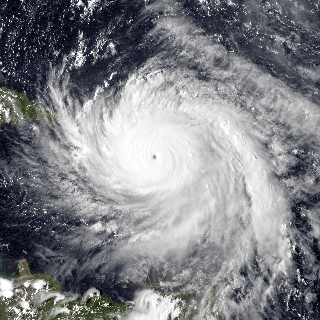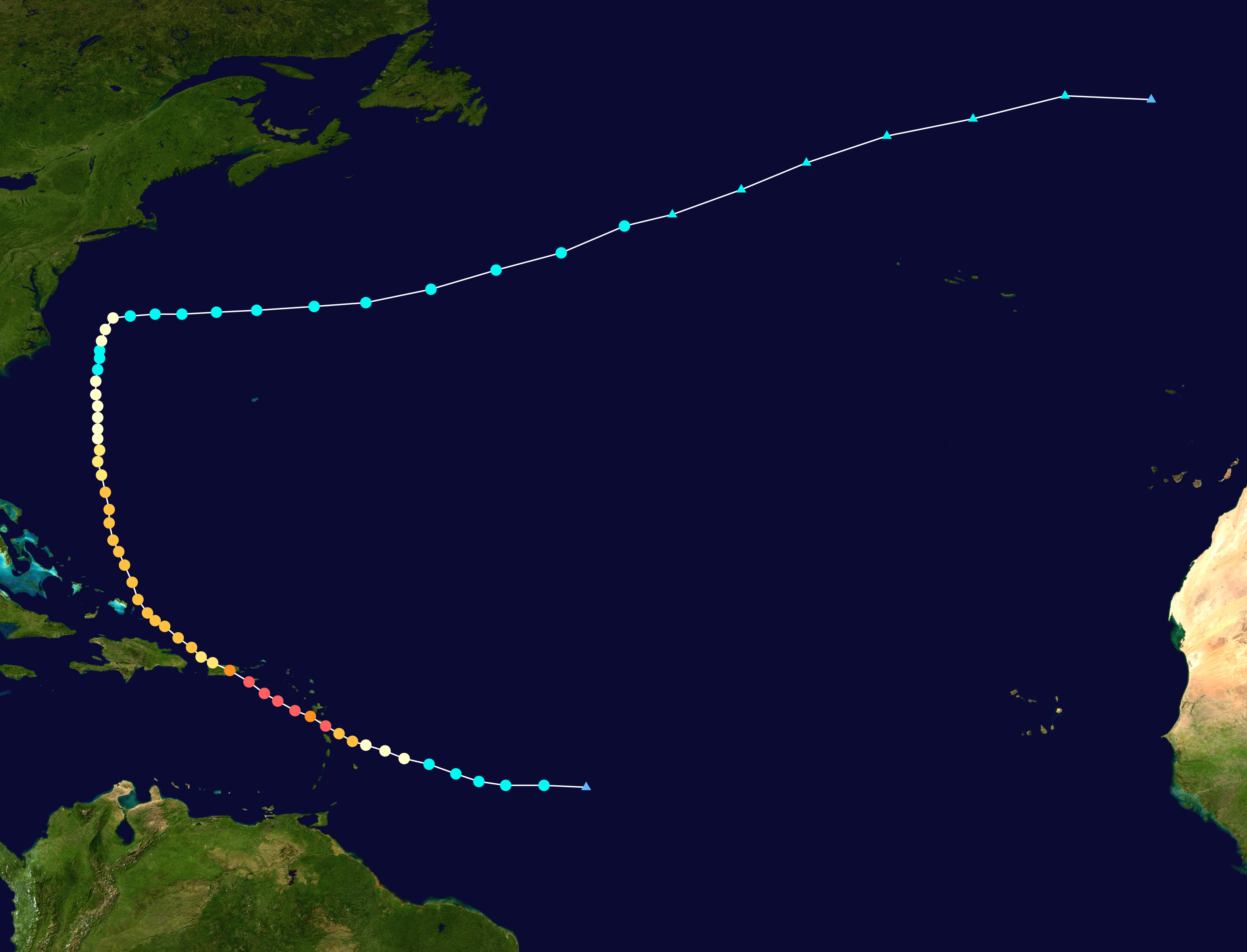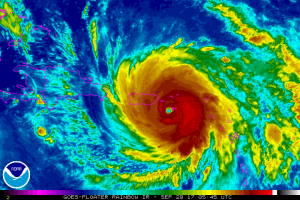BACKGROUND
Hurricane Maria was a category 5 hurricane which impacted mainly Puerto Rico and Dominica resulting in over 540 deaths. The highest winds observed reached a speed of 175mph which was reportedly sustained for 1 minute. The lowest pressure observed during the hurricane was 908mbar.
The National Hurricane Service initially began monitoring two potential systems - Maria and Lee - on September 13. The eastern most Lee quickly developed and became a hurricane, while the western most Maria continue to develop and grow in strength over the ocean which provided the best conditions such us moisture, low surface wind shear and the right sea surface temperature to grow and strengthen Maria to her full strength. As seen in the image below, the general direction of the system was in the northwest direction, steered by a mid-level ridge anchored north of the hurricane.
On September 17 and 18, the hurrricane intensity grew rapidly and models suggested even further intensification as lightening was detected in the eye of the storm. Soon after, surface winds of 120 mph and pressure of 959 mbar was detected, making Maria a Category 3 hurricane and therefore a major hurricane. As predicted by the model, later on September 18, Maria further intensified 15 mi southeast of Dominica with surface winds of 160 mph and pressure of 925 mbar. On September 19, Maria made landfall in Dominica as a Category 5 Hurricance - the first of its kind to ever hit the island, killing 4 people. The mountaineous island weakened the storm slighlty to a Category 4, however, as it moved toward Puerto Rico over the ocean it further intensified back to a category 5 reaching its peak wind speed and lowest recorded pressure before making landfall on Puerto Rico on September 20. Below is an image of the storm over Puerto Rico.
Maria completely devastated the country puring 30 inches of rain in just one day (equal to amount poured over Houston by Harvey in three days) and killing many people. The intensity of the stormed decreased to a Category 3 as it passed Puerto Rico to other islands and slowly decreased in strength unltil September 25 when its inner core collapsed. A lot of it decrease in intensity came from the cooler ocean teperatures caused by hurricanes Irma and Jose which preceded Maria by only a few weeks.
Maria was a truly devastating hurricane wreaking havoc over many small countries and costing them many lives and millions of dollar of damage.
A set of lab actvities devised by LT Jon Andrechik, Instructor, Marine Science, U.S. Coast Guard Academy have been posted in the Forum for Teachers pages of the following experiments: Solid Body Rotation, Dye Stirring, Fronts, Ekman Layers, General Circulation, Ekman Pumping & Suction, Ocean Gyres.
Weather in a Tank wiki is getting ready for the new semester.


